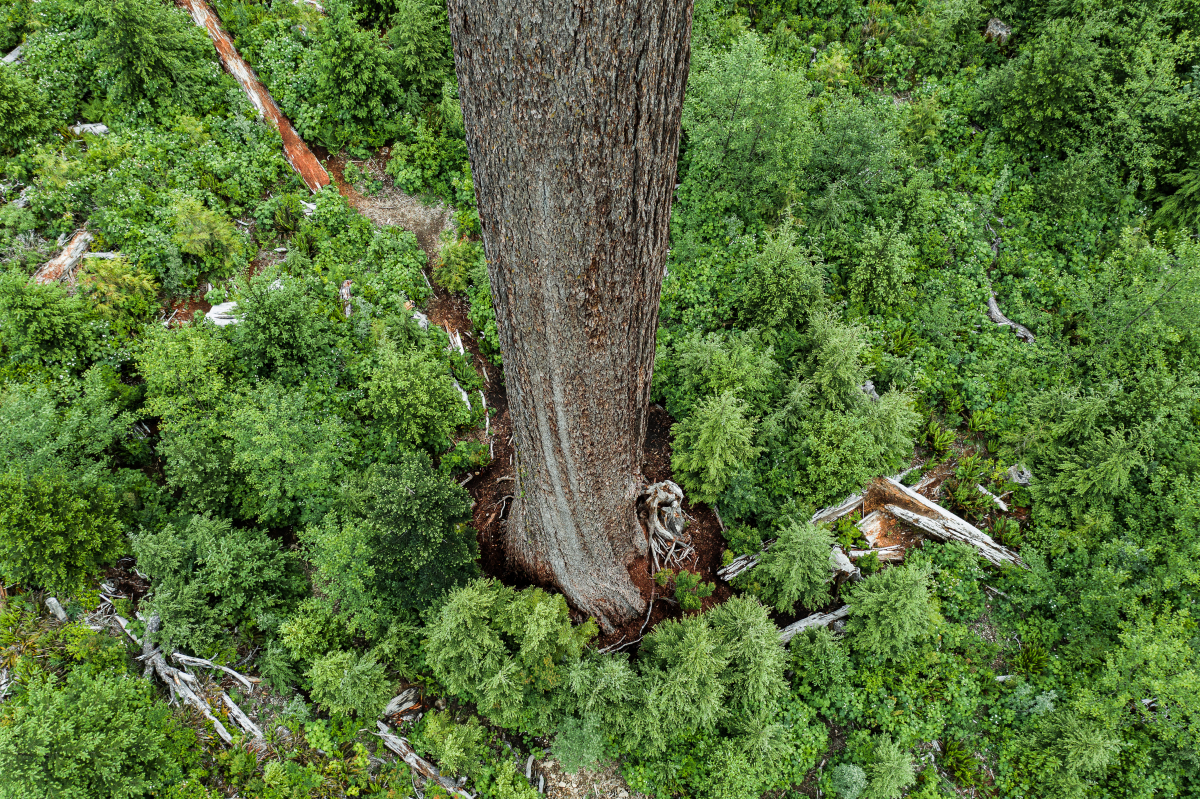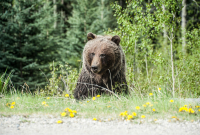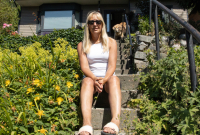Support strong Canadian climate journalism for 2025
In late June, British Columbia and the federal government announced that they’ve helped non-profit foundations and trusts buy eight parcels of land from private owners for old-growth conservation, largely on and around Vancouver Island.
However, all but one of the forests included in this purchase announcement do not contain old-growth trees, defined by the B.C. government as 250-year-old coastal forests and 140-year-old forests in parts of the B.C. interior. Instead, seven of the eight purchased properties contain what’s called “recruitment” old-growth — that is, forests that have been logged.
For Torrance Coste, national campaign director for the Wilderness Committee, buying these lands to protect them from future threats of logging and development is important, both ecologically and for reconciliation. But it’s dishonest to announce this as a win, particularly as old-growth logging continues in other parts of Vancouver Island and B.C.
“Passing this off as old-growth protection, using funds earmarked for old-growth protection and publicly celebrating it, is lying, and further shreds the government’s credibility when it comes to conservation,” Coste said.
The government announcement suggests about $8 million from the Old Growth Nature Fund and another $8 million from private donors were used to buy 300 hectares of land to protect and conserve “critical old growth and habitat for species at risk.”
A spokesperson for the B.C. Ministry of Water, Land and Resource Stewardship said in an email to Canada’s National Observer that recruitment old-growth forests are on their way to becoming what most people would consider old-growth.
“Recruitment old growth forests are younger forests that have some of the characteristics of old growth forests including large, mature trees but lack the full complexity and age characteristics of traditional old growth forests,” the spokesperson wrote. These recruitment old growth trees are technically second growth — forests that have been logged before — which the ministry says is important to protect because “they are expected to develop old forest characteristics sooner than other second growth forests.”
Coste noted that the fifth recommendation in the Old Growth Strategic Review is about improving public information and transparency to rebuild trust in forest management in B.C. But the governments’ old-growth announcement is clearly not fulfilling this.
(If elected, a B.C. Conservative government would get rid of this “nonsense” commitment altogether, according to party leader John Rustad, speaking to The Narwhal’s Shannon Waters.)
One of the eight forests sits on 68.5 hectares of waterfront land in East Sooke on southern Vancouver Island. According to Andrew Day, CEO of the BC Parks Foundation (the organization that will manage it), this site was chosen because it’s part of the diverse and underprotected coastal western hemlock biogeoclimatic zone, and buying it gives the foundation a chance to create a connected ecosystem by potentially adding it to the existing regional park next door.
“Less than 10 per cent of that kind of ecosystem is currently protected, so we're always looking for opportunities to increase the protection of that,” Day said.
“We just bought it a couple months ago, and the likely scenario is that we’ll join it with the East Sooke Regional Park, but that'll take a little bit of time.”
In another, much larger announcement last month, the B.C. government and the Ahousaht and Tla-o-qui-aht First Nations signed an agreement to safeguard 76,000 hectares of land that includes old-growth forests in Clayoquot Sound on Vancouver Island, to be managed by the two nations.
Other recent announcements about old-growth and at-risk ecosystem protection through the 2023 climate agreement between the province, federal government and First Nations Leadership Council, have been made to showcase government action on their promise to protect 30 per cent of Canadian land by 2030.
Government ‘can’t return what it doesn’t own’
The East Sooke forest has been private property since the 1800s, Day said. According to him, the seller has held onto it since the 90’s for conservation purposes.
“The patriarch in the family saved every penny, never really spent a lot of money on anything other than buying land, largely for conservation reasons,” Day said. “They have done a wonderful job preserving it.”
According to Coste, old-growth conservation is more difficult on Vancouver Island and the southern Gulf Islands, where about a third of land is privately owned — compared to five per cent in the rest of B.C. — as a result of the E&N railway land grants in the late 1800s. It means there’s less provincial or First Nations-owned land available for conservation, so private landowners are often a third party in old-growth forest conservation and reconciliation talks.
“There's a huge interest in land being returned to First Nations, that has to be returned government-to-government … but B.C. can't return what it doesn't own,” Coste said.
At the waterfront forest to be managed by BC Parks Foundation in East Sooke, the T’sou-ke First Nation won’t have any ownership, but Day says the plan is to work with them to steward the land.
“Once we have the data around where the species-at-risk are and that kind of information, then we'll sit down with [the Capital Regional District and T’sou-ke First Nation] and come up with a plan for the property,” Day said. “This ensures that, instead of going into private hands again and [T’sou-ke First Nation] being excluded from it, it provides opportunities for them to help steward the land and practice traditional cultural activities.”
If left in private hands, each of the protected forest parcels on and around Vancouver Island was considered to be at risk for logging or development, according to the Ministry of Water, Land and Resource Stewardship.
Old-growth logging continues
At the same time, old-growth trees that environmental advocates say should qualify for logging deferrals continue to be felled on Vancouver Island and across B.C.
Photos taken by members of environmental organization Ancient Forest Alliance (AFA) earlier this month show massive old-growth trees being logged by BC Timber Sales, the provincial government’s own logging agency, in the Nahmint Valley on Vancouver Island. Some of these trees are more than 500 years old, according to the organization.
Ken Wu, executive director of Endangered Ecosystems Alliance and board member at AFA, said the province needs to make it easier to add old-growth forests to logging deferral lists once their size and age is known.
“When they're logging, the foresters who are taking a look should be required under the law to report any [old-growth] stands that are about to be logged that fit the criteria of what should be deferred,” Wu said.
According to the B.C. ministry spokesperson, consultations with First Nations are required before old-growth stands are added to deferral lists.
The cutblocks documented by AFA “were developed and sold by BC Timber Sales with support of local First Nations,” the spokesperson wrote. “Over 3,000 hectares of old growth has been deferred in the Nahmint Landscape Unit.”
According to Wu, there needs to be more funding for First Nations to take part in consultations about deferral lists.
“If you don't have that funding, then it's an unreasonable request that they just forgo several years of revenues while they do community consultations,” he said.
Faster government action to protect at-risk old-growth has been a call to action by both environmental groups and First Nations, with the Union of B.C. Indian Chiefs calling in a May statement for Premier David Eby to “issue emergency logging bans in the most at-risk old-growth forests, and to align all sectors with the Old Growth Strategic Review.”






Comments